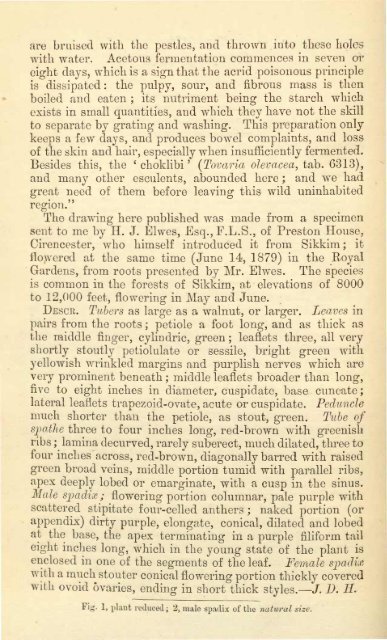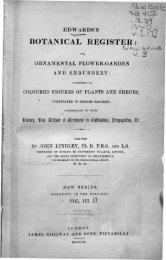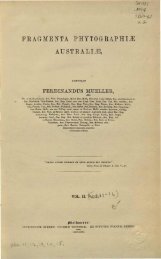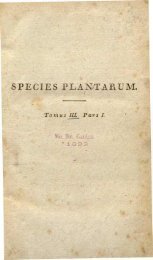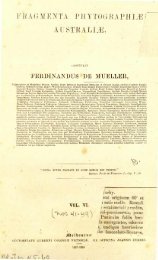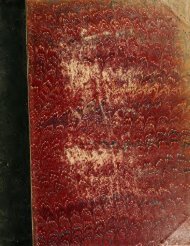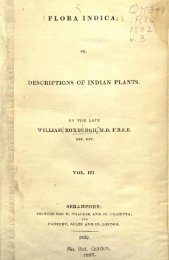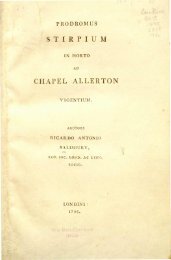Botanical Magazine 106 - 1880.pdf - hibiscus.org
Botanical Magazine 106 - 1880.pdf - hibiscus.org
Botanical Magazine 106 - 1880.pdf - hibiscus.org
Create successful ePaper yourself
Turn your PDF publications into a flip-book with our unique Google optimized e-Paper software.
are bruised with the pestles, arid thrown into these holes<br />
with water. Acetous fermentation commences in seven or<br />
eight days, which is a sign that the acrid poisonous principle<br />
is dissipated : the pulpy, sour, and fibrous mass is then<br />
boiled and eaten ; its nutriment being the starch which<br />
exists in small quantities, and which they have not the skill<br />
to separate by grating and washing. This preparation only<br />
keeps a few days, and produces bowel complaints, and loss<br />
of the skin and hair, especially when insufficiently fermented.<br />
Besides this, the • choklibi ' (Tovaria olevacea, tab. 6313),<br />
and many other esculents, abounded here ; and we had<br />
great need of them before leaving this wild uninhabited<br />
region."<br />
The drawing here published was made from a specimen<br />
sent to me by H. J. Elwes, Esq.,F.L.S., of Preston House,<br />
Cirencester, who himself introduced it from Sikkim; it<br />
flowered at the same time (June 14, 1879) in the Royal<br />
Gardens, from roots presented by Mr. Elwes. The species<br />
is common in the forests of Sikkim, at elevations of 8000<br />
to 12,000 feet, flowering in May and June.<br />
DESCB. Tubers as large as a walnut, or larger. Leaves in<br />
pairs from the roots ; petiole a foot long, and as thick as<br />
the middle finger, cylindric, green ; leaflets three, all very<br />
shortly stoutly petiolulate or sessile, bright green with<br />
yellowish wrinkled margins and purplish nerves which are<br />
very prominent beneath ; middle leaflets broader than long,<br />
five to eight inches in diameter, cuspidate, base cunéate;<br />
lateral leaflets trapezoid-ovate, acute or cuspidate. Peduncle<br />
much shorter than the petiole, as stout, green. Tube of<br />
sjmthe three to four inches long, red-brown with greenish<br />
ribs ; lamina decurved, rarely suberect, much dilated, three to<br />
four inches across, red-brown, diagonally barred with raised<br />
green broad veins, middle portion tumid with parallel ribs,<br />
apex deeply lobed or emarginate, with a cusp in the sinus.<br />
Male spadix; flowering portion columnar, pale purple with<br />
scattered stipitate four-celled anthers ; naked portion (or<br />
appendix) dirty purple, elongate, conical, dilated and lobed<br />
at the base, the apex terminating in a purple filiform tail<br />
eight inches long, which in the young state of the plant is<br />
enclosed in one of the segments of the leaf. Female spadix<br />
with a much stouter conical flowering portion thickly covered<br />
with ovoid ovaries, ending in short thick styles.•J. D. II.<br />
Fig. 1, plant reduced ; 2, male spadix of the natural size.


